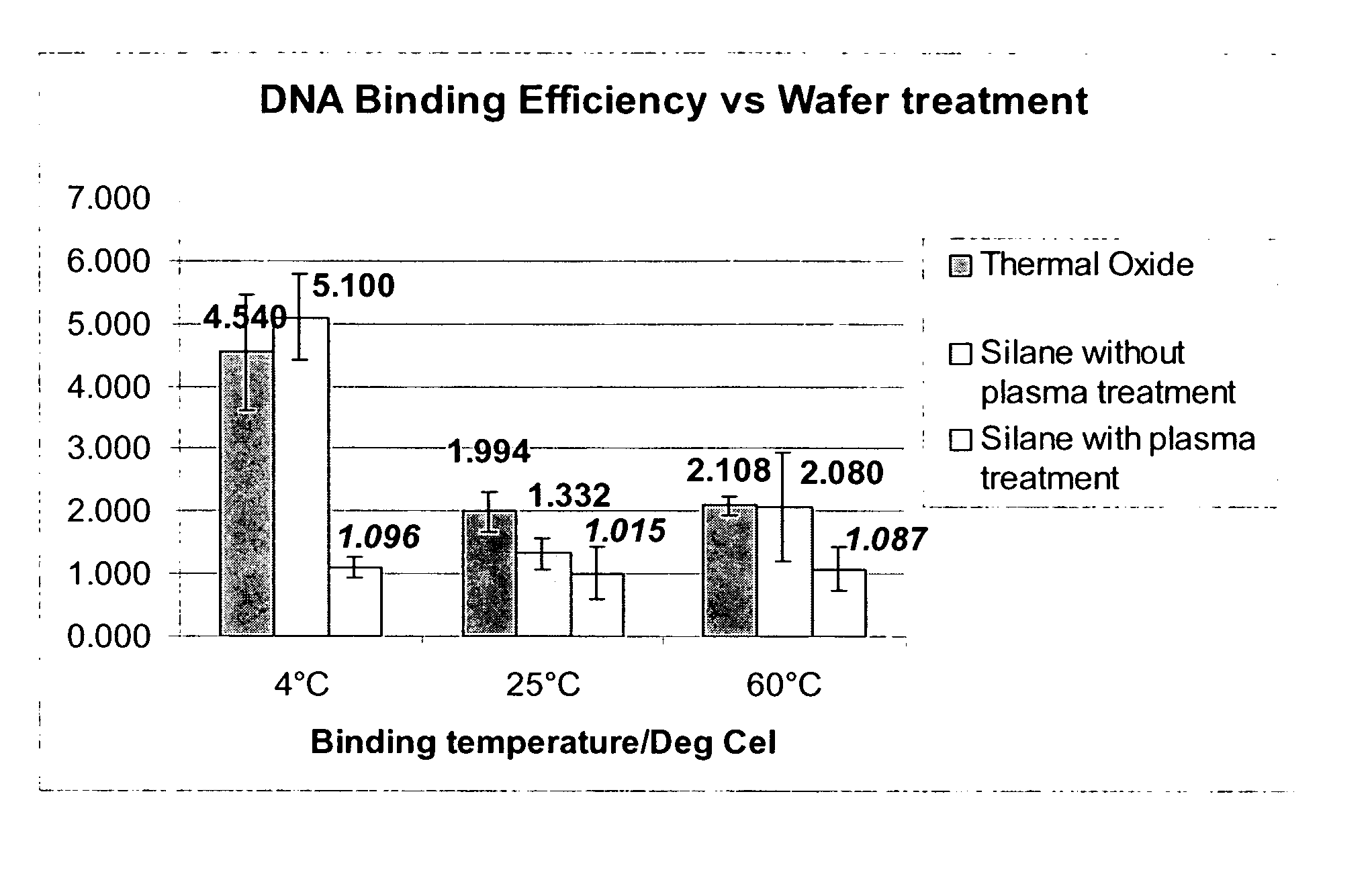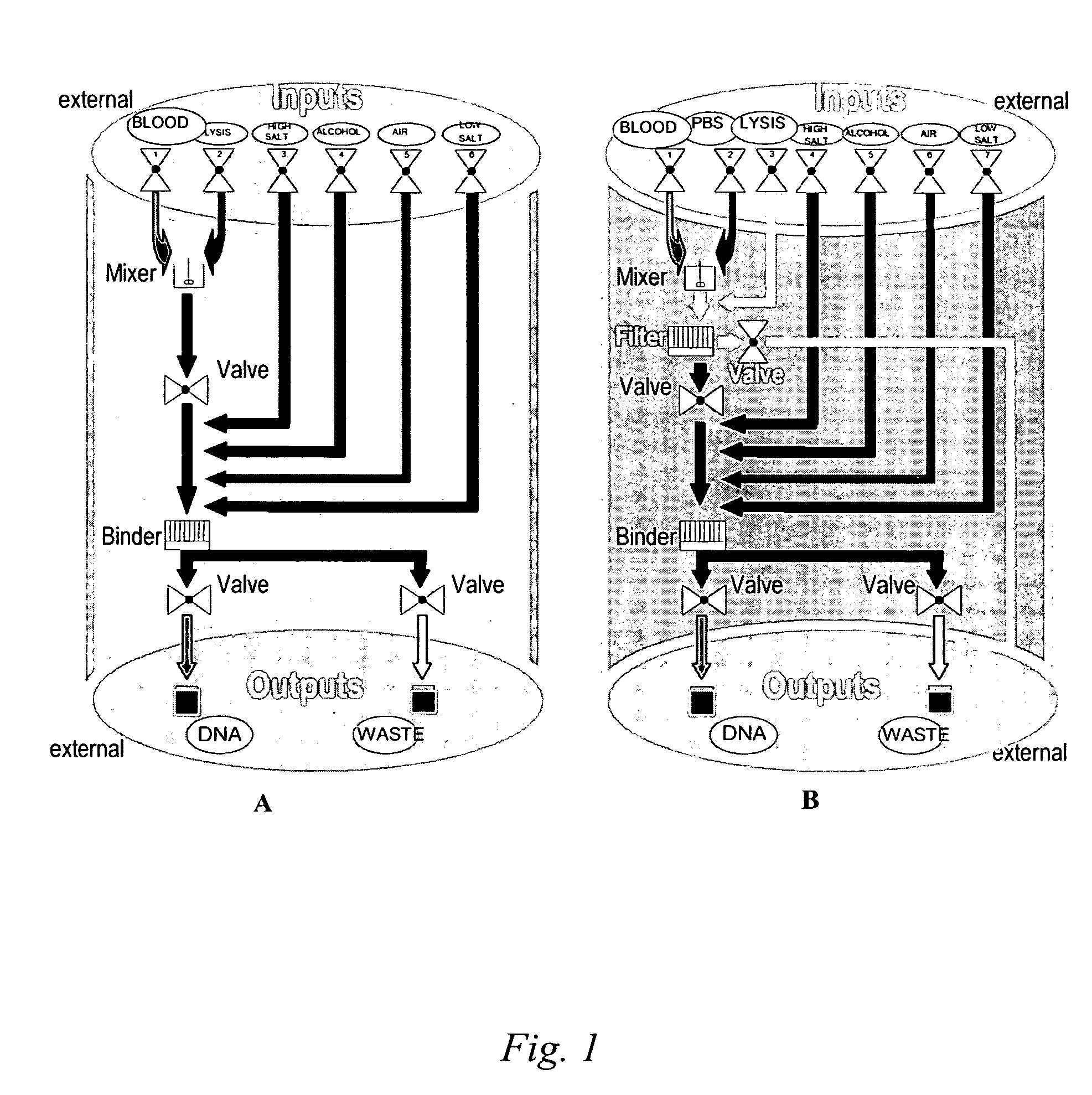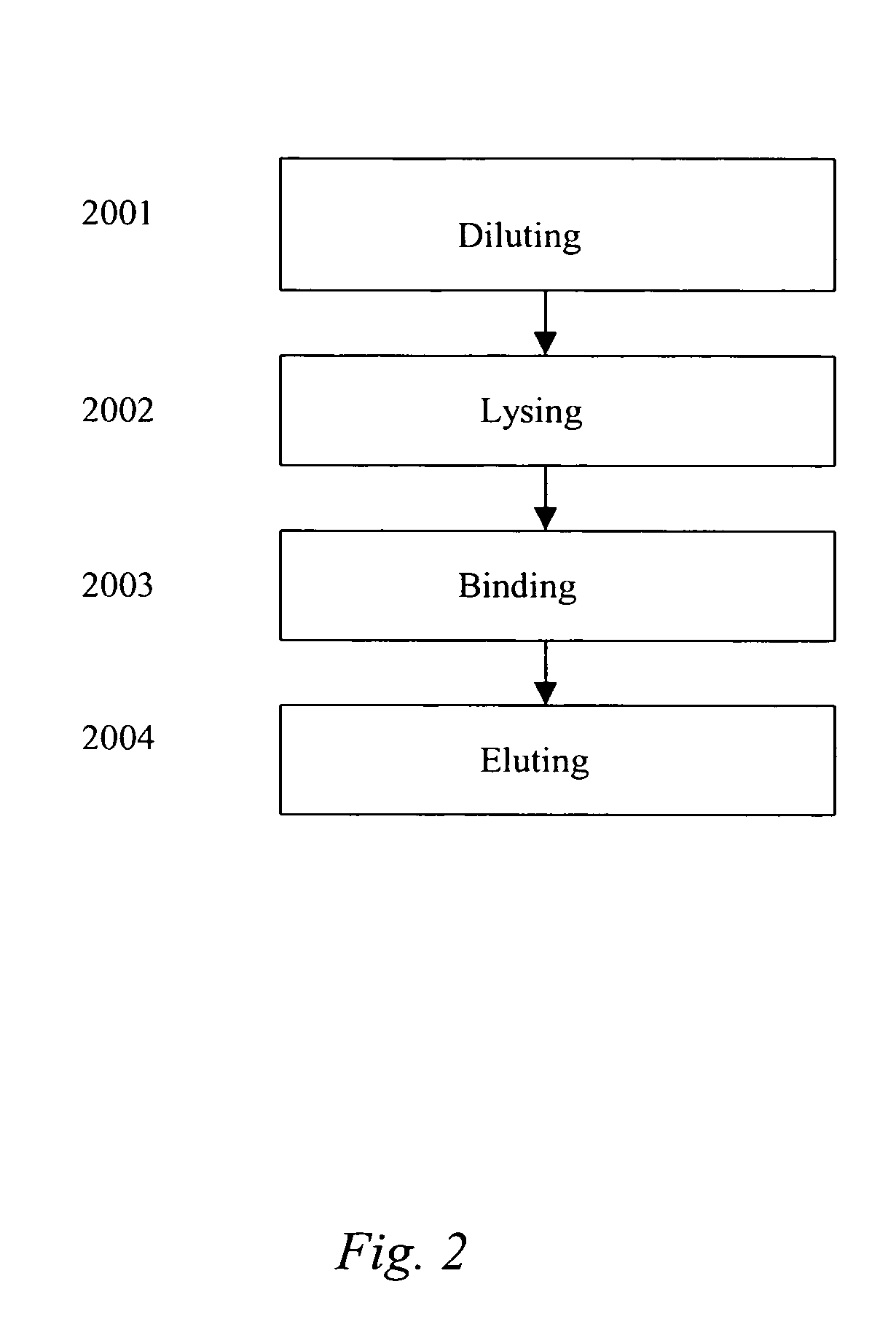Nucleic acid purification chip
a technology of nucleic acid and chip, which is applied in the field of biotechnology, can solve the problems of affecting the normal processing of dna from blood at a hospital or laboratory, requiring a large amount of time, and requiring numerous steps, and achieves the effects of reducing steady-state power consumption, rapid change of system temperature, and small dead volum
- Summary
- Abstract
- Description
- Claims
- Application Information
AI Technical Summary
Benefits of technology
Problems solved by technology
Method used
Image
Examples
example 1
[0059] This Example illustrates how a microfluidic nucleic acid purification chip of the present invention can be fabricated. Such a chip may be fabricated by the following steps:
[0060] Step 1: Bare silicon wafer is oxidized by thermal oxidation to an oxide thickness of about 0.5 μm. A 0.15 μm-thick layer of low-pressure chemical vapor deposited stoichiometric silicon nitride is then deposited on the silicon oxide.
[0061] Step 2: The wafer from the previous step is then masked for DRIE. The mask layer can be photoresist, but this may need to be changed to another material for RIE depths more than about 40 μm. The photoresist is then removed after silicon etching.
[0062] Step 3: The channels of the wafer from the previous step are etched on the front side of the silicon wafer using DRIE.
[0063] Step 4: Next, the backside of the silicon wafer from the previous step is selectively masked by photoresist, and the openings for the backside fluidic inlets and outlets are etched into the s...
example 2
[0072] This example serves to illustrate the effect of further plasma treatment on the thermal oxide-produced binding material as used in embodiments of the present invention.
[0073] In this Example, the purification efficacy of a thermal oxide-generated binding material was evaluated by comparing the eluant of four different binding materials: [0074] Thermal oxide alone. [0075] Thermal oxide+hydrogen peroxide / sulfuric acid (“Piranha,” comprising a 3:1 conc. H2SO4:30% H2O2) clean. [0076] Thermal oxide+plasma etching. [0077] Thermal oxide+plasma etching+hydrogen peroxide / sulfuric acid (Piranha) clean.
wherein the plasma treatments comprised a CHF3+O2 environment.
[0078] The DNA was bound to the respective binding material under the same test conditions for each of the four differently-prepared binders using typical high salt chaotropic conditions, such as 6M guanidine hydrochloride solution, and the material was then rinsed in a clean 6M guanidine hydrochloride solution. The DNA was...
example 3
[0082] This Example serves to illustrate the effect of temperature on the elution efficiency.
[0083] Experiments were performed on 1 cm×1 cm squares of silicon with thermal silicon oxide. The oxide surface underwent a CHF3 plasma etching process with CHF3 and O2. Five μg of pure DNA was diluted in 8 μl of 6M guanidine hydrochloride solution. The DNA was then placed on the surface of a silicon die and a second silicon die was placed on top, forming a sandwich arrangement. The die were then placed in an airtight container with controlled humidity and incubated for 15 minutes. The die were then rinsed three times in fresh guanidine hydrolchloride (100 μl each time), followed by rinsing three times with 70% ethanol (100 μl each time). The samples were then allowed to dry at room temperature before elution was carried out. Wafers were eluted four times (total of 280 μl), each time with fresh 70 μl of 10×TE buffer (described earlier), and each time for 5 minutes, at the control temperatur...
PUM
| Property | Measurement | Unit |
|---|---|---|
| temperatures | aaaaa | aaaaa |
| temperatures | aaaaa | aaaaa |
| thickness | aaaaa | aaaaa |
Abstract
Description
Claims
Application Information
 Login to View More
Login to View More - R&D
- Intellectual Property
- Life Sciences
- Materials
- Tech Scout
- Unparalleled Data Quality
- Higher Quality Content
- 60% Fewer Hallucinations
Browse by: Latest US Patents, China's latest patents, Technical Efficacy Thesaurus, Application Domain, Technology Topic, Popular Technical Reports.
© 2025 PatSnap. All rights reserved.Legal|Privacy policy|Modern Slavery Act Transparency Statement|Sitemap|About US| Contact US: help@patsnap.com



